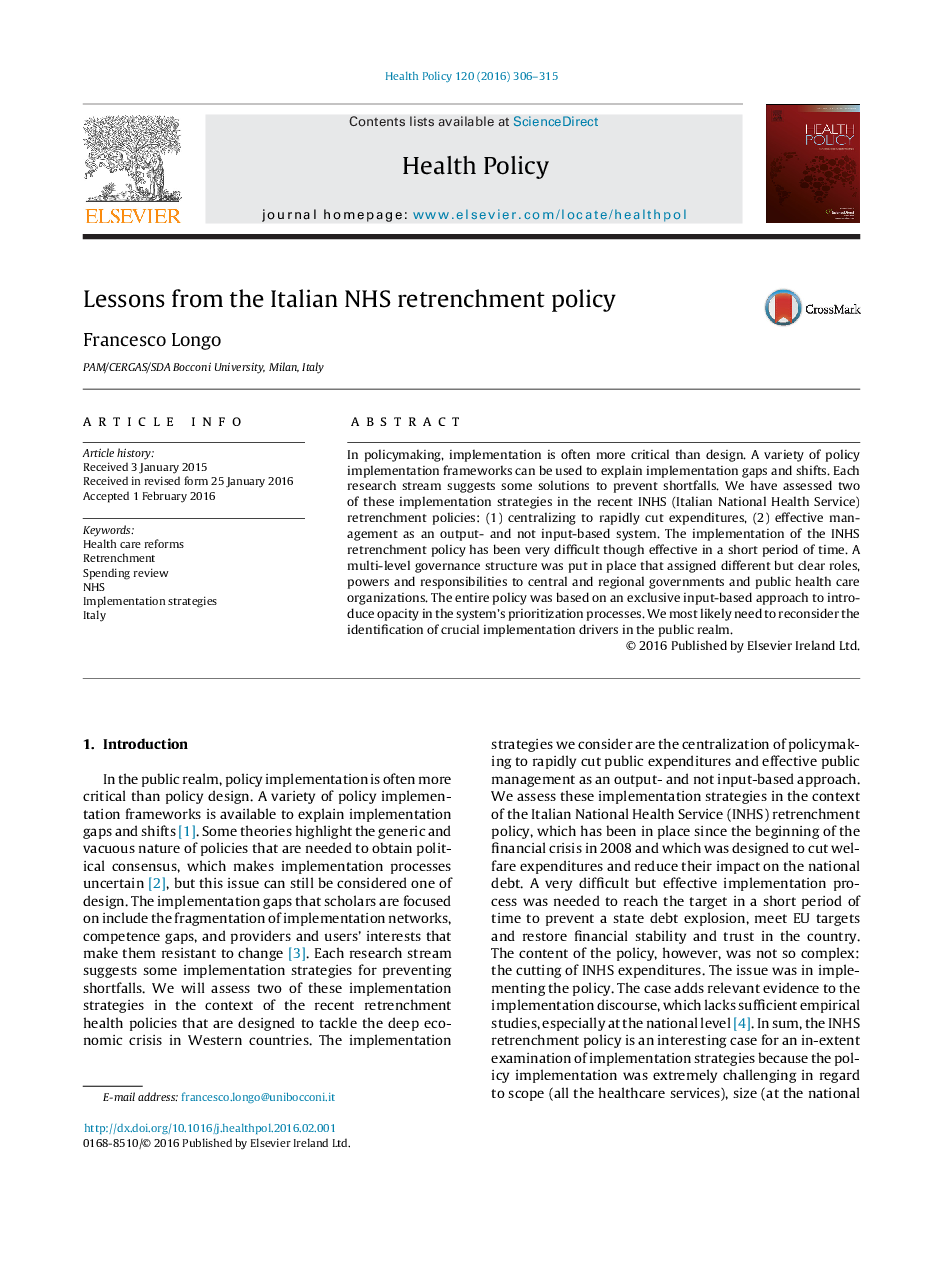| Article ID | Journal | Published Year | Pages | File Type |
|---|---|---|---|---|
| 6239120 | Health Policy | 2016 | 10 Pages |
â¢The relevance of implementation gaps that scholars are focused on.â¢The centralization of policymaking to rapidly cut public expenditures.â¢The effectiveness of public management as an output- and not input-based system.â¢Assessment of implementation strategies in the context of INHS retrenchment policy.â¢Challenges related to scope, size, multilevel governance structure and targets.
In policymaking, implementation is often more critical than design. A variety of policy implementation frameworks can be used to explain implementation gaps and shifts. Each research stream suggests some solutions to prevent shortfalls. We have assessed two of these implementation strategies in the recent INHS (Italian National Health Service) retrenchment policies: (1) centralizing to rapidly cut expenditures, (2) effective management as an output- and not input-based system. The implementation of the INHS retrenchment policy has been very difficult though effective in a short period of time. A multi-level governance structure was put in place that assigned different but clear roles, powers and responsibilities to central and regional governments and public health care organizations. The entire policy was based on an exclusive input-based approach to introduce opacity in the system's prioritization processes. We most likely need to reconsider the identification of crucial implementation drivers in the public realm.
